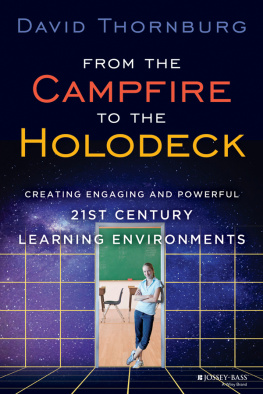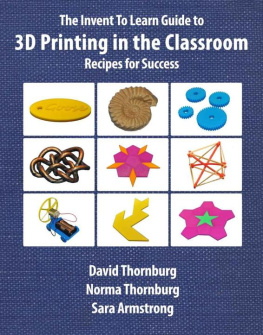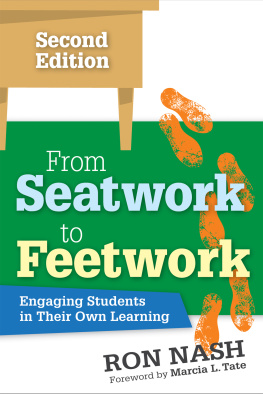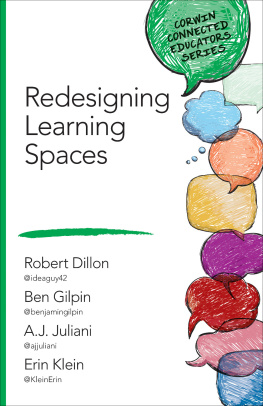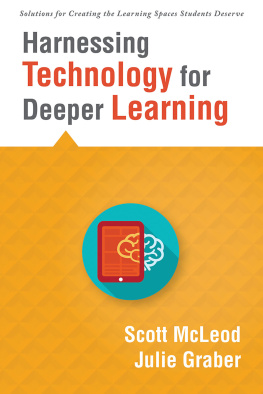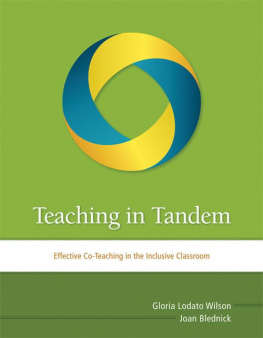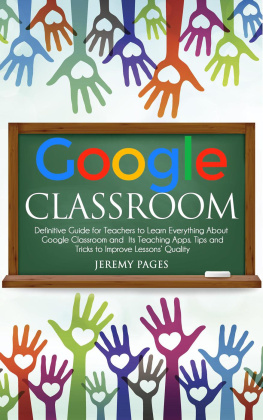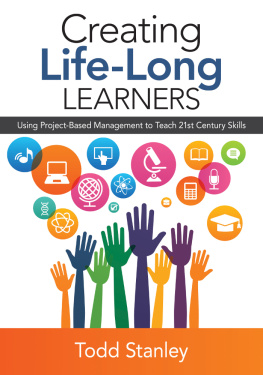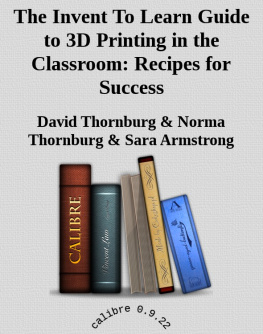
Table of Contents
Cover design: Jeff Puda
Cover images: (girl) Ableimages/Getty; (space) Son Gallery; Wilson Lee/Getty; (classroom) Comstock Images/Getty
Copyright 2014 by John Wiley & Sons, Inc. All rights reserved.
Published by Jossey-Bass
A Wiley Brand
One Montgomery Street, Suite 1200, San Francisco, CA 94104-4594www.josseybass.com
No part of this publication may be reproduced, stored in a retrieval system, or transmitted in any form or by any means, electronic, mechanical, photocopying, recording, scanning, or otherwise, except as permitted under Section 107 or 108 of the 1976 United States Copyright Act, without either the prior written permission of the publisher, or authorization through payment of the appropriate per-copy fee to the Copyright Clearance Center, Inc., 222 Rosewood Drive, Danvers, MA 01923, 978-750-8400, fax 978-646-8600, or on the web at www.copyright.com. Requests to the publisher for permission should be addressed to the Permissions Department, John Wiley & Sons, Inc., 111 River Street, Hoboken, NJ 07030, 201-748-6011, fax 201-748-6008, or online at www.wiley.com/go/permissions.
Limit of Liability/Disclaimer of Warranty: While the publisher and author have used their best efforts in preparing this book, they make no representations or warranties with respect to the accuracy or completeness of the contents of this book and specifically disclaim any implied warranties of merchantability or fitness for a particular purpose. No warranty may be created or extended by sales representatives or written sales materials. The advice and strategies contained herein may not be suitable for your situation. You should consult with a professional where appropriate. Neither the publisher nor author shall be liable for any loss of profit or any other commercial damages, including but not limited to special, incidental, consequential, or other damages. Readers should be aware that Internet websites offered as citations and/or sources for further information may have changed or disappeared between the time this was written and when it is read.
Jossey-Bass books and products are available through most bookstores. To contact Jossey-Bass directly call our Customer Care Department within the U.S. at 800-956-7739, outside the U.S. at 317-572-3986, or fax 317-572-4002.
Wiley also publishes its books in a variety of electronic formats and by print-on-demand. Some material included with standard print versions of this book may not be included in e-books or in print-on-demand. If the version of this book that you purchased references media such as CD or DVD that was not included in your purchase, you may download this material at http://booksupport.wiley.com. For more information about Wiley products, visit www.wiley.com.
Library of Congress Cataloging-in-Publication Data
Library of Congress Cataloging-in-Publication Data has been applied for and is on file with the Library of Congress.
ISBN: 9781118633939 (cloth); ISBN: 9781118633946 (ePub); ISBN: 9781118748060 (ePDF)
[Schools] have their indispensable officeto teach elements. But they can only highly serve us when they aim not to drill, but to create; when they gather from far every ray of various genius to their hospitable halls, and, by the concentrated fires, set the hearts of their youth on flame.
Ralph Waldo Emerson, 1837
Foreword
I still remember vividly my first encounter with David Thornburg's writings in early 2000 because of the profound impact it had on my work as a school architect. It is an influence that continues to affect our maturing practice at Fielding Nair International, where David's philosophies find creative expression every day throughout the United States and in many remote parts of the world.
My encounter with David's ideas came shortly after I had left my post as operations director for New York City's School Construction Program to start up my own consulting practice. During my stint with New York City, I had a key role in the creation of more than one hundred new schools and the modernization of at least five hundred old school buildings. My decision to leave my government job came shortly after my distressing realization that neither the new schools nor the modernized ones had done much to improve student educational achievement. On further examination, it became clear to me that we had spent about $10 billion on school buildings to reinforce what was, fundamentally, a flawed educational model. This model was all about the absorption and regurgitation of a static set of facts by students in a factory setting where the teacher firmly controlled both the inputs and outputs of education. Under this scheme, the rows and rows of identical classrooms along a double-loaded corridor sparsely furnished with cheap desks and chairs was the prevailing design of the day. Never mind that this identical design had been in place for nearly a century. That factor alone should have made us question if there was something wrong with our approach. However, to do so would have required us to question the nature of education itself, which would have led us to the rational conclusion that the predominant teacher-centered educational model of the day had gone past obsolescence and become, for the most part, irrelevant.
It is one thing to know that something needs to be done and another thing altogether to figure out exactly what to do or how to go about doing it. Education has been subjected to dozens of reform efforts since the 1980s, but, one could argue, very little seems to have actually changed in schools. Teachers continue to wield absolute control and students spend most of their school day on rote assignments. Much of their school day is spent preparing for tests by memorizing meaningless facts divorced from any real or deep understanding of the subject being studied. That said, there is still hope for our education system. Many effective reform efforts have taken root, and, although still small in scope and scale, the work by the tireless advocates for change is slowly beginning to bear fruit. One thing distinguishes this modern group of reformers from their predecessors. They are pragmatists, and their solutions are noted for their simple elegance and easy adoptability. Few reformers fit this description better than David Thornburg.
David came to prominence with his writings about the use of technology in schools and how this could be the game changer we had all been waiting for. Interestingly, when David first started writing about the subject, technology's promise to change education was still largely unrealized. In the 1980s and 1990s, governments had poured tens of billions of dollars into educational technology and had seen very little in the way of measurable returns. For example, I was personally aware of the way in which New York City wasted hundreds of millions of dollars with its policy to dump four computers in every middle school classroom. The problems with this approach are too numerous to list fully but consider that the city made no attempts to train teachers on how to use the technology, that large numbers of schools did not even have adequate outlets to plug in the new equipment, that schools had no internal network at that time for students to connect with each other and store their work, that there was no plan to connect the computers to the Internet, and there was no coherent plan to properly integrate technology into the curriculum.
This New York City example was, of course, an obviously broken technology program and not as big a concern for David because this dysfunction was evident to all. Instead, David had his eyes focused on schools and school districts that seemed to have their technology act togetherwhere computer labs were humming smoothly and students were working with technology on a regular basis. In his earlier writings, and in this book as well, David asks us to look more closely at these schools. He instructs usand I'm paraphrasing hereDon't ask what you can do with computers but what can you do now that you have computers. Using this instruction as a guide, it became quickly apparent that most schools were asking the wrong question. They were asking, What should we do with this technology? Most of the time, they answered this question by using technology to simply reinforce the prevalent teacher-centered model. In this book, David points out the many ways in which technology continues to be used today to perpetuate teacher control and student dependence whether through rote technology-assisted assignments or by replacing older technologies such as the blackboard with newer technologies like SMART Boards without fundamentally changing the teacher-as-fountain-of-all-knowledge educational model.
Next page
